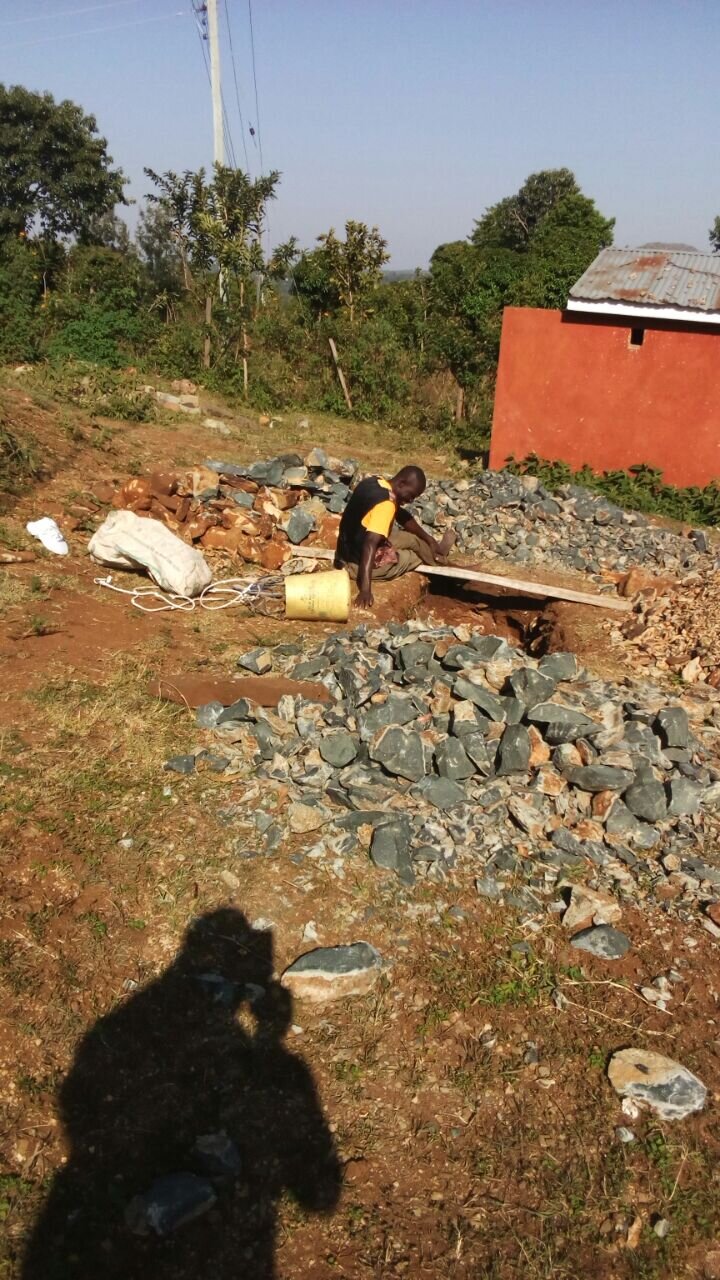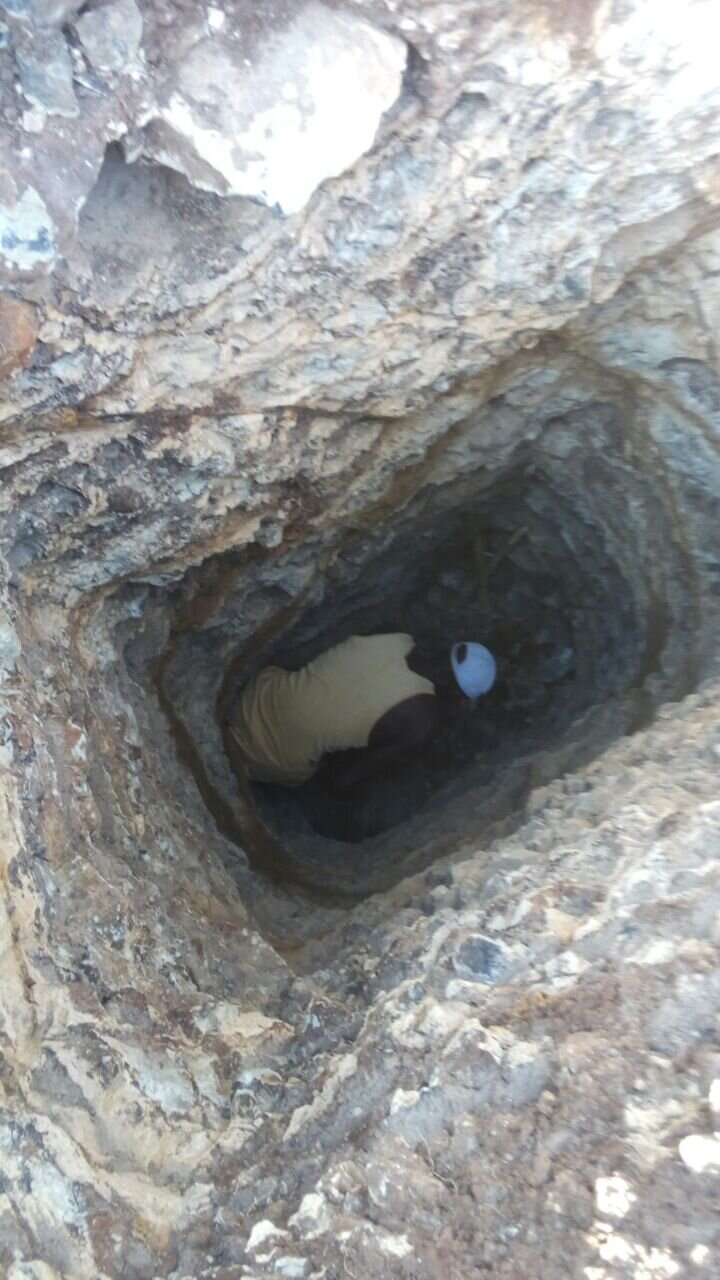The Dirty Work: Building a New Pit Latrine
It's a challenge that civilizations all over the world have struggled with, from the very first human settlements, all the way to modern day mega-cities;
How do we get rid of the poop?
It sounds funny, but in all seriousness, solid waste disposal is a major challenge in any place where people live in high concentrations. In places with no internal plumbing, it's an even bigger challenge because improper waste disposal can lead to health hazards. E. coli, diarrhea and other dangerous conditions happen because of open water source contamination. Disease can reach human bodies by way of direct contact as well as indirectly through flies and other human waste eating parasites.
In Rabuor, as in most of the developing world, we don't have the benefit of sewers of septic systems. Our answer to the age-old question of waste disposal is a hole in the ground - albeit a very deep one - and it may be among the most essential work we do. Pit latrines function quite well as the most cost-effective, manageable, and sanitary way to dispose of waste in the village. However latrines do eventually fill up, and when that happens a new pit must be dug.
It's not glamorous, but Mwanzo is proud of our new (and deeper) pit latrine, which will have two rooms for girls and one for boys. Another stall for teachers and church-goers in our school compound is currently being excavated. When completed, this project will serve the entirety of our growing school community for the next ten years or more. The new latrine is an upgrade to 40 cubic meters, whereas the previous one we dug in 2012 was only two stalls and 25 cubic meters. For some perspective on just how much volume that is, 20-foot shipping containers like you might see on a cargo ship are only 33 cubic meters.
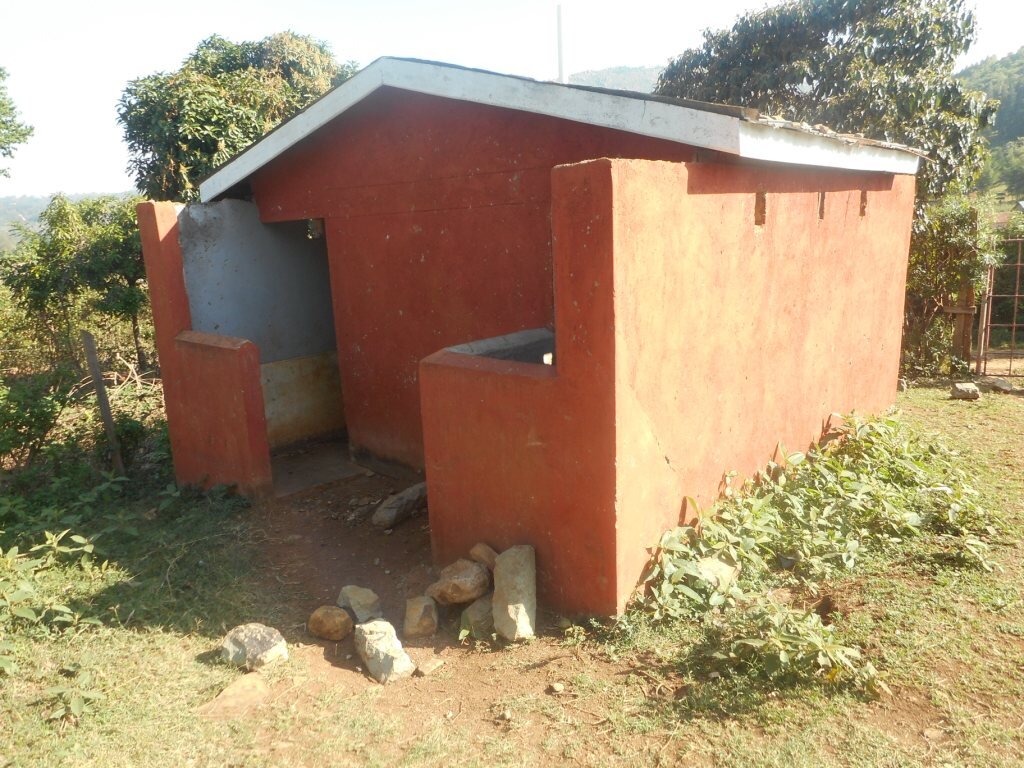
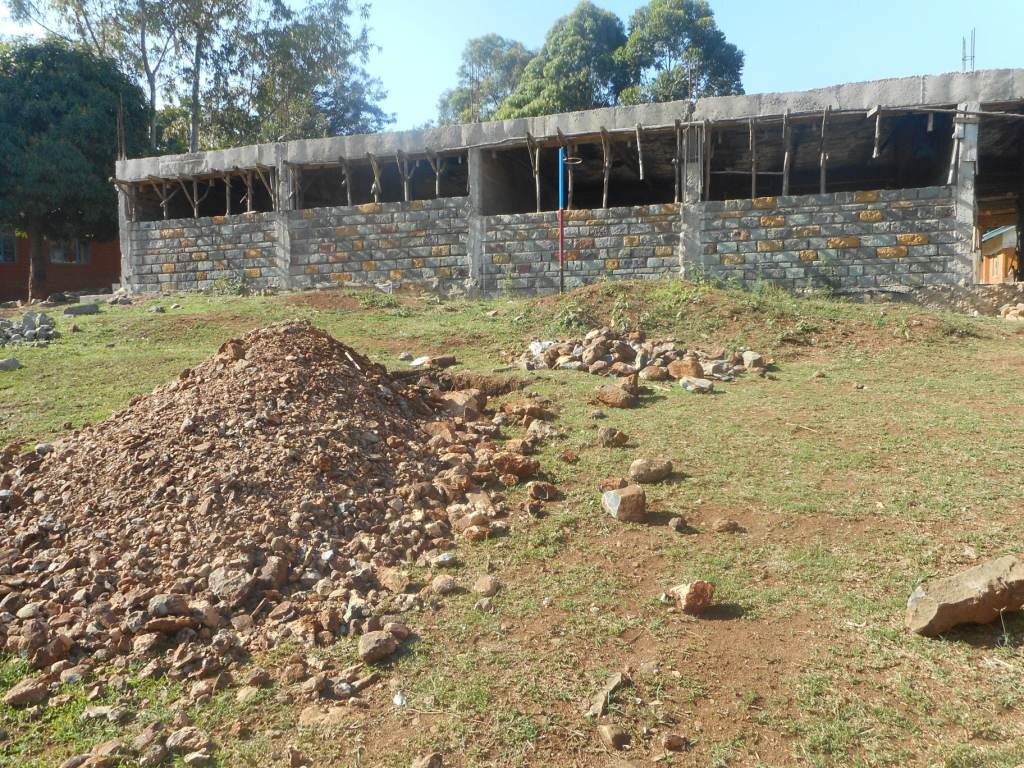
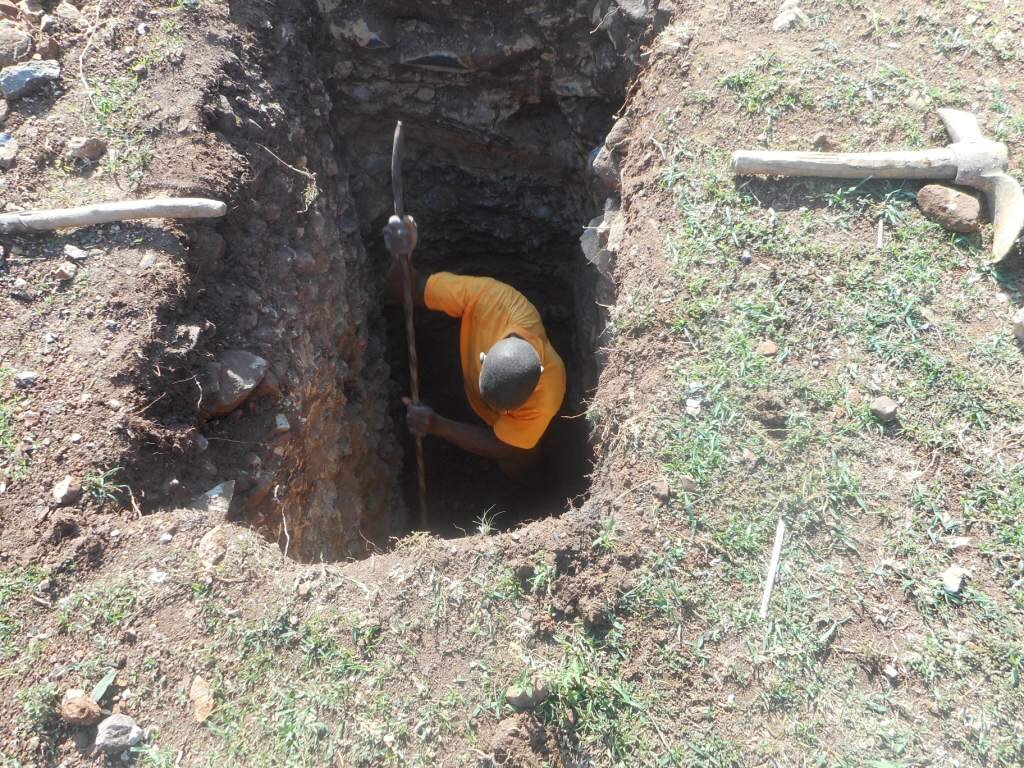
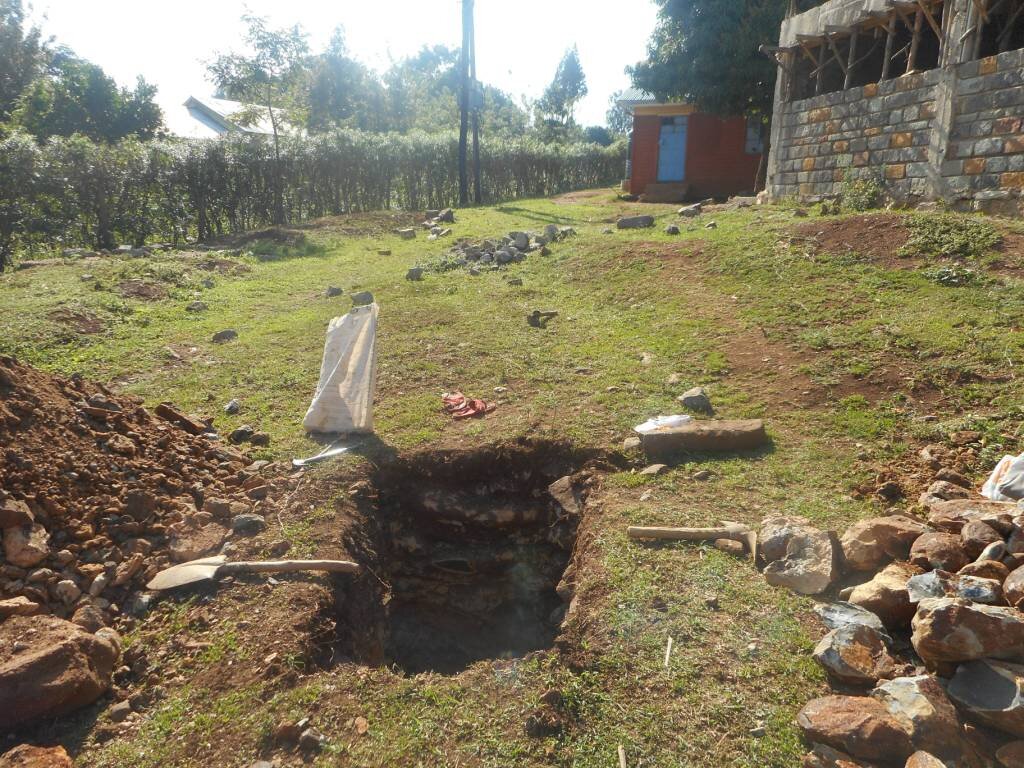
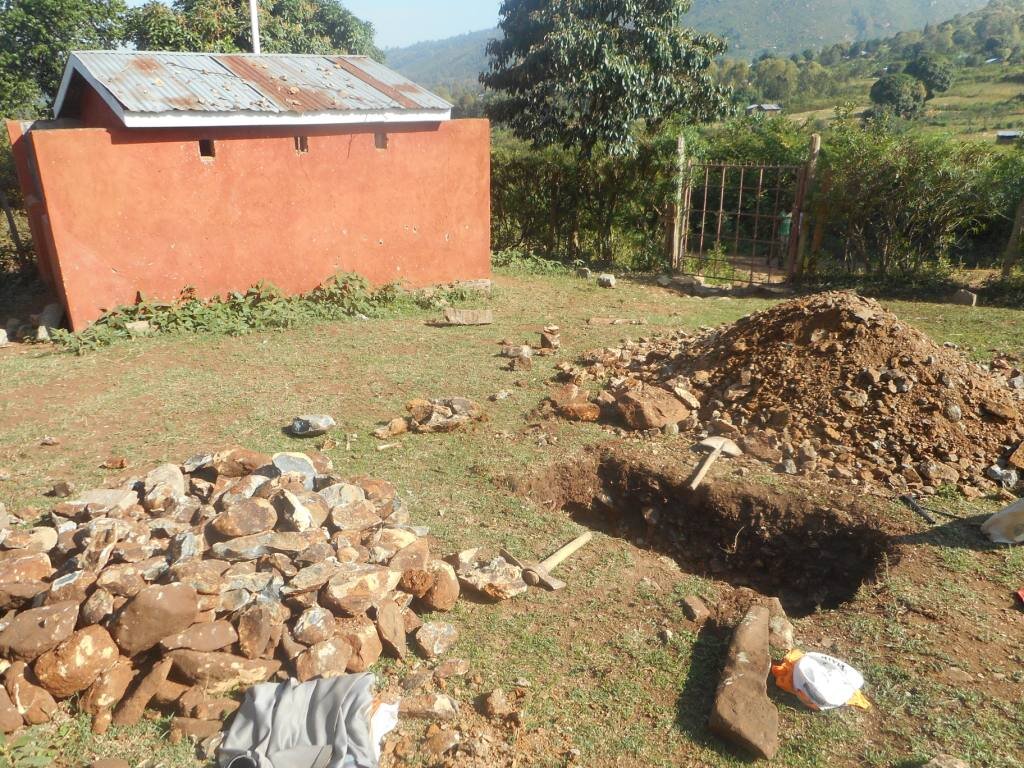
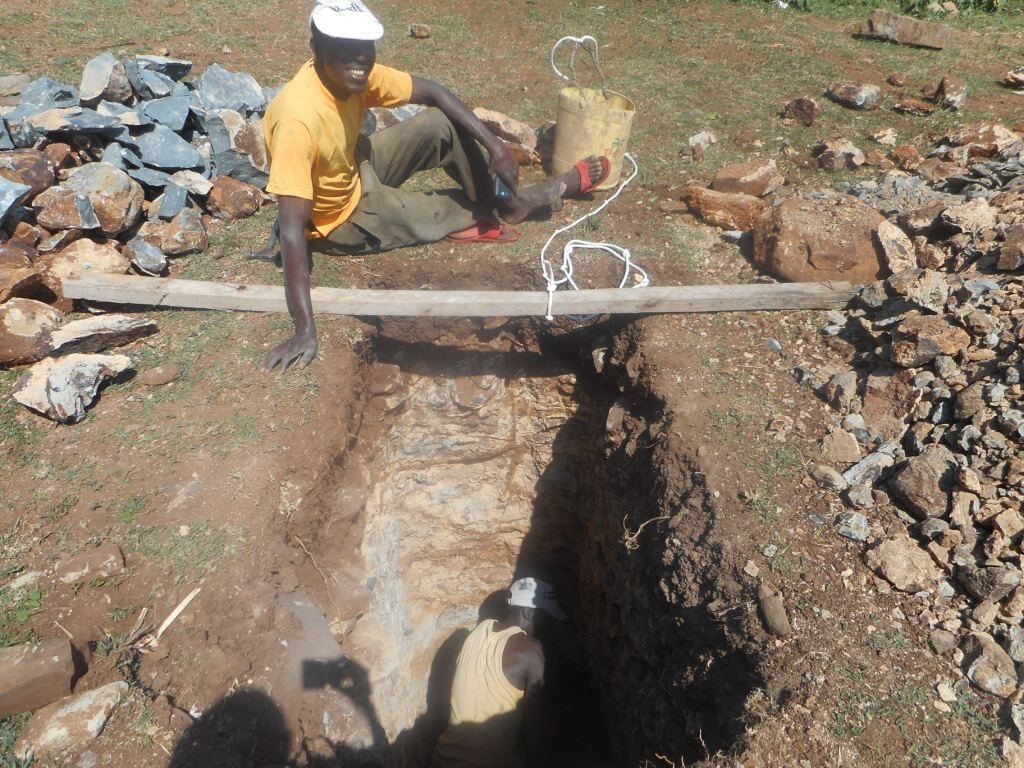
Without excavators and heavy equipment, this entire hole has been dug by two-man teams working with shovels and a pick-axe. As you can see in the photos, one man works down in the hole breaking rocks and scooping them up, while the other hoists the rocks up to ground-level and discards them. The men will trade off duties throughout the day. Even though the work will seem impossibly difficult for most reading this, the latrine project along with our larger school construction, provides much-needed jobs and fair pay to laborers in the local community.
Because we found the rock to be harder than expected, construction of this latrine has taken one moth longer than expected. That said, the upside to this is that the rock should serve as an extra shield against seepage into the surrounding soil. The sides of the pit will still be reinforced to prevent seepage sideways, but it's a bonus to have such a strong 'container'. Even with delays in the excavation process, construction is expected to be completed in mid-October when the old latrine will be sealed off for the rest of eternity.

